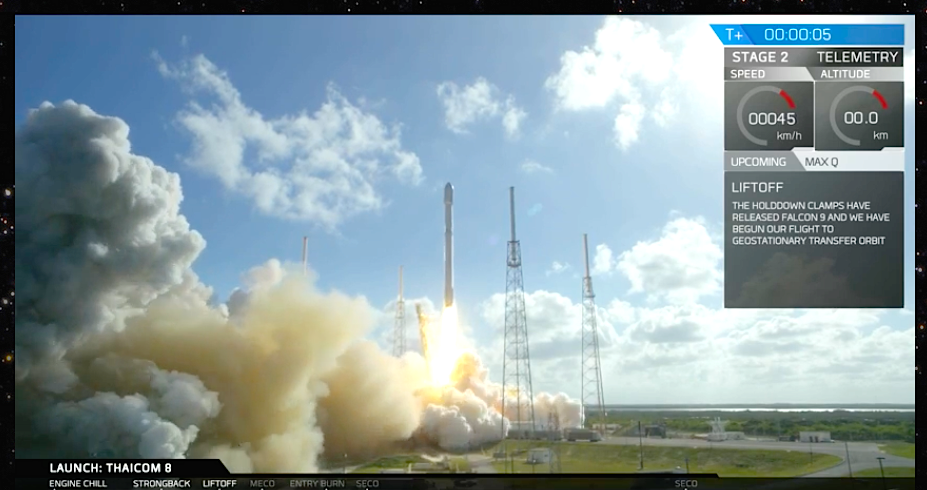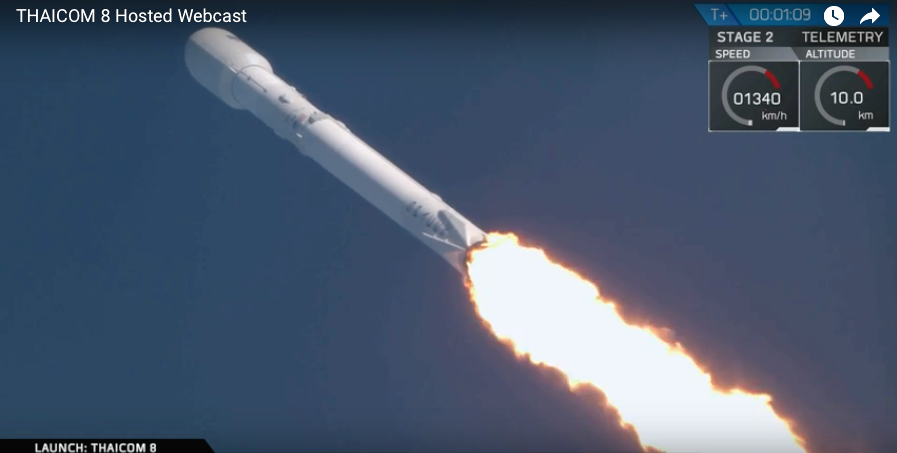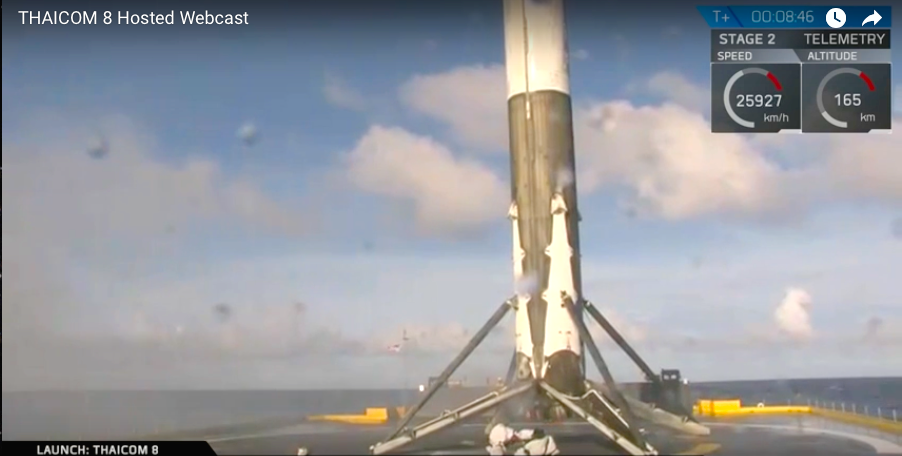
SpaceX on Friday landed its third consecutive rocket on the “Of Course I Still Love You” Autonomous Spaceport Drone Ship in the Atlantic Ocean, during a mission that successfully launched a commercial communications satellite to orbit.
“Falcon 9 has landed,” a member of SpaceX’s launch team confirmed about 10 minutes after a 230-foot Falcon 9 rocket's 5:39 p.m. blastoff from Cape Canaveral Air Force Station.
About 20 minutes later, the rocket's upper stage deployed the Thaicom 8 satellite in orbit as planned.
Later, Musk said the rocket's first stage had landed at close to the top speed it was designed to handle, possibly undermining its stability on the ship floating more than 400 miles offshore.
"Prob ok, but some risk of tipping," he said on Twitter.
If it staid upright, crews planned to board the unpiloted "drone ship" to weld shoes over the rocket's four landing legs and sail it back to Port Canaveral within a few days.

Musk's comment was a reminder that despite a remarkable run of three straight booster landings and four in the company's last six missions, the landings remain experimental.
SpaceX's goal is to cut launch costs by reusing rockets. Musk eventually wants to achieve aircraft-like operations, with teams needing only to hose down down and refuel rockets between flights.
But the rockets landed Friday and three weeks ago have sustained more damage, possibly too much to allow them to fly again.
That's not surprising, since their landings were considered the most difficult yet to pull off. Both missions launched communications satellites on their way to orbits more than 22,000 miles over the equator, requiring more speed.
After completing their engine burns and separating, the roughly 14-story boosters dropped more than 70 miles, hitting the atmosphere at about 4,000 mph.
Descending at that high velocity, the rockets were seared with heating five times more intense than on missions to lower orbits, like SpaceX’s launches of cargo to the International Space Station.

And the rockets had less fuel to spare for engine firings that slowed their fall.
Despite those challenges, the Falcon 9 booster on Friday again deployed its legs and touched down on the football field-sized deck of the ship named "Of Course I Still Love You," prompting another celebration from employees gathered at SpaceX headquarters in Hawthorne, California.
If it returns to shore, the Falcon 9 booster will join three others stored in a hangar at Kennedy Space Center, beginning to strain its capacity: the hangar can only hold five.
The information is part of a report by James Dean of Floridatoday.com

